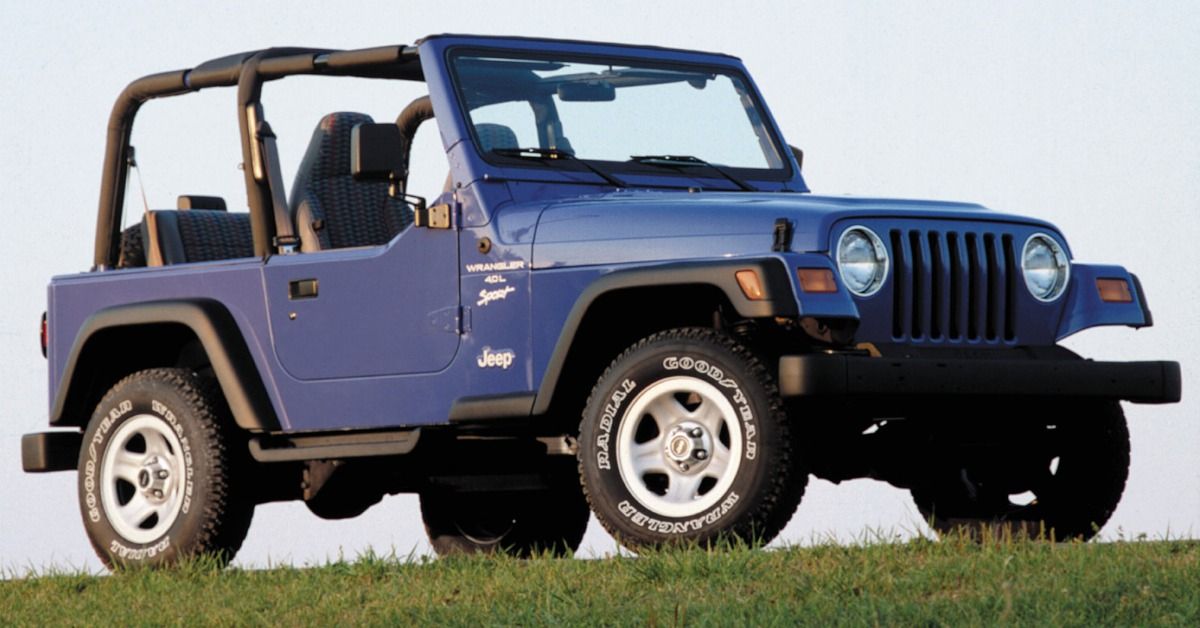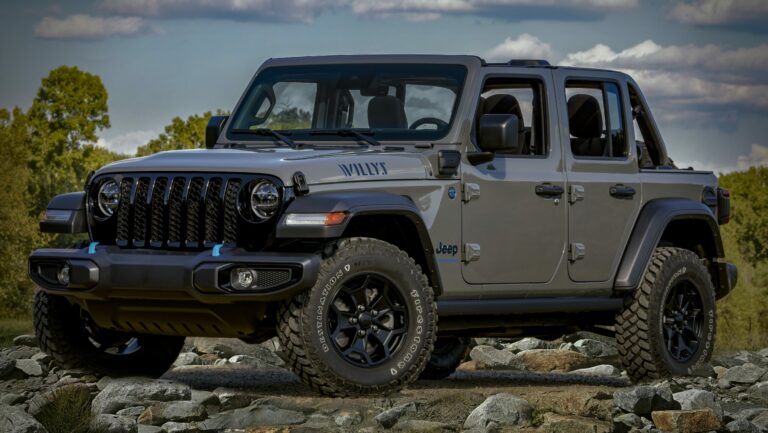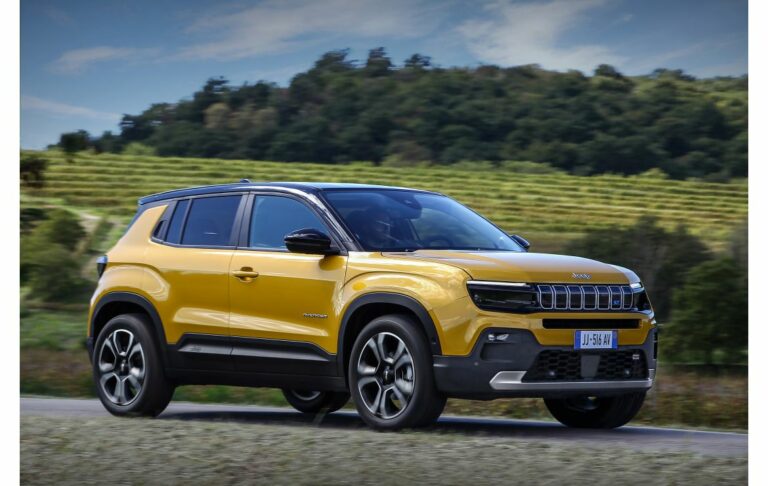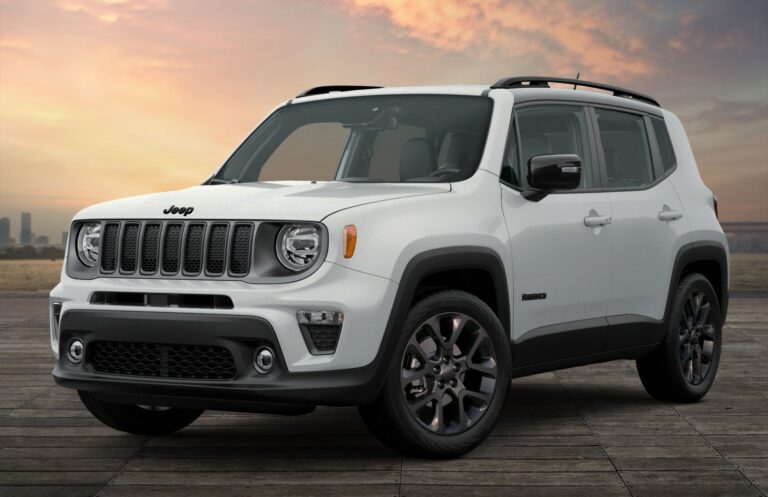1997 To 2006 Jeep Wrangler For Sale: Your Essential Buyer’s Guide
1997 To 2006 Jeep Wrangler For Sale: Your Essential Buyer’s Guide /jeeps.truckstrend.com
The Jeep Wrangler is more than just a vehicle; it’s a statement, a lifestyle, and a symbol of adventure. Among its storied generations, the 1997 to 2006 model, affectionately known as the TJ, holds a special place in the hearts of off-road enthusiasts and casual drivers alike. When you’re looking for a 1997 to 2006 Jeep Wrangler for sale, you’re not just buying a used car; you’re investing in a piece of automotive history renowned for its rugged capability, legendary reliability, and unparalleled customizability. This era of Wrangler marked a significant evolution from its predecessors, introducing coil-spring suspension for a vastly improved ride without sacrificing its iconic solid-axle off-road prowess.
This comprehensive guide is designed to equip you with all the knowledge needed to navigate the market for a 1997 to 2006 Jeep Wrangler for sale. From understanding its key features and common pitfalls to smart buying strategies and what to expect from ownership, we’ll cover everything to help you make an informed decision and find the perfect TJ for your next adventure.
1997 To 2006 Jeep Wrangler For Sale: Your Essential Buyer’s Guide
Why the 1997-2006 Jeep Wrangler (TJ) Remains a Top Choice
Despite being two decades old, the TJ generation of the Jeep Wrangler continues to be highly sought after in the used vehicle market. Its enduring appeal stems from a unique blend of attributes that newer models often struggle to replicate:
- Unrivaled Off-Road Capability: The TJ’s short wheelbase, excellent approach and departure angles, and robust solid-axle setup (Dana 30 front, Dana 35 or 44 rear) make it incredibly agile and capable on challenging terrain. The legendary Command-Trac (part-time 4×4) and available Rock-Trac (Rubicon) transfer cases ensure power gets to where it’s needed most.
- Simplicity and Modifiability: Unlike modern vehicles packed with complex electronics, the TJ is relatively simple, making it easier for DIY enthusiasts to maintain and repair. The aftermarket support for the TJ is arguably the most extensive of any Jeep generation, offering endless possibilities for customization, from lift kits and armor to engine swaps.
- Durability and Reliability: The cornerstone of the TJ’s reputation is its workhorse 4.0L inline-six engine (more on this below). With proper maintenance, these Jeeps are known to rack up hundreds of thousands of miles. Their robust construction means they can withstand significant abuse both on and off the pavement.
- Classic Jeep Experience: The removable doors and soft or hard tops offer an unmatched open-air driving experience, connecting you directly with the environment. It’s a feeling that defines the Wrangler and is a major draw for those seeking a 1997 to 2006 Jeep Wrangler for sale.
- Value Retention: Due to high demand and their iconic status, TJs hold their value remarkably well. While initial purchase prices might seem high for an older vehicle, you’re likely to recoup a significant portion of your investment if you decide to sell it later.
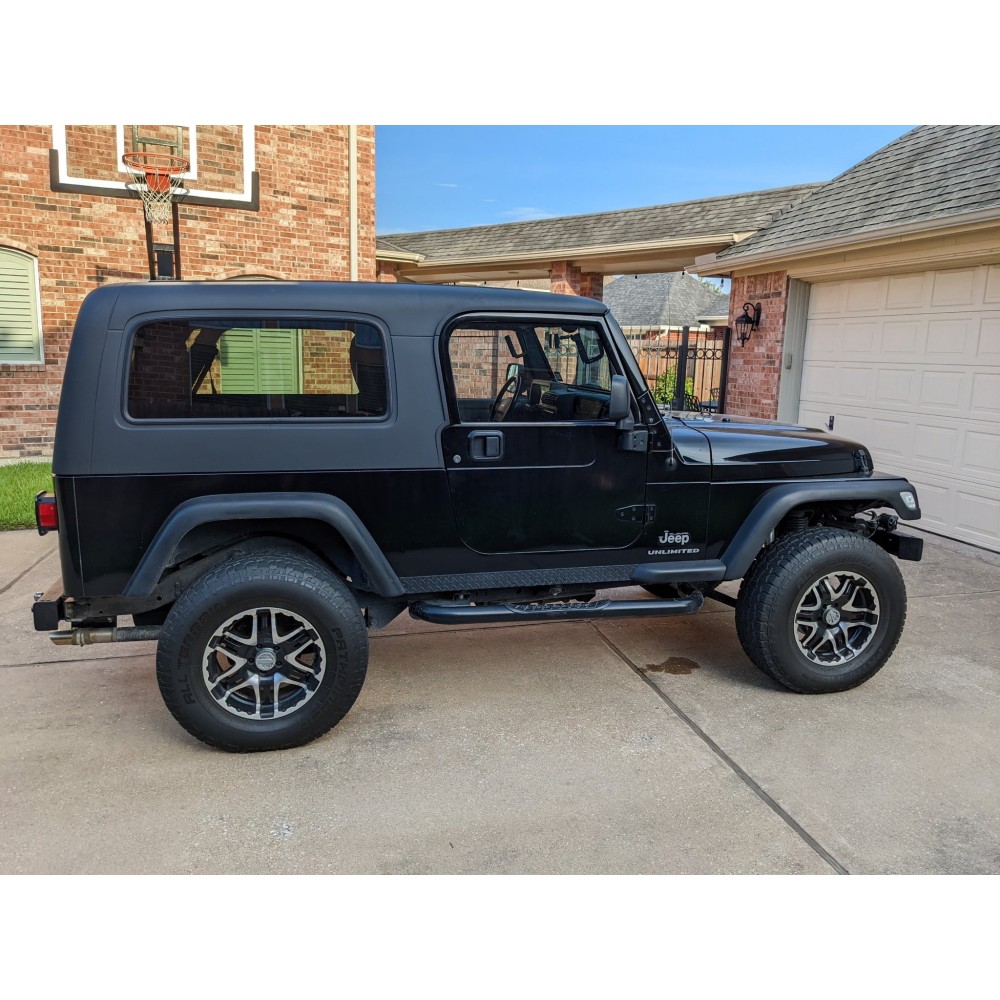
Key Features and Specifications of the TJ Generation
Understanding the various configurations and features available can help you narrow down your search for a 1997 to 2006 Jeep Wrangler for sale.
- Engine Options:

- 2.5L AMC I4 (1997-2002): A reliable but less powerful four-cylinder engine, producing around 120 horsepower. It’s suitable for light-duty use or those prioritizing fuel economy (relatively speaking for a Jeep).
- 4.0L AMC I6 (1997-2006): The undisputed king of TJ engines, this inline-six is renowned for its torque (around 220 lb-ft), durability, and longevity. Producing 181-190 horsepower depending on the year, it’s the preferred choice for most buyers, especially those planning off-road excursions or larger tires.
- Transmission Options: Both engines were available with manual and automatic transmissions.
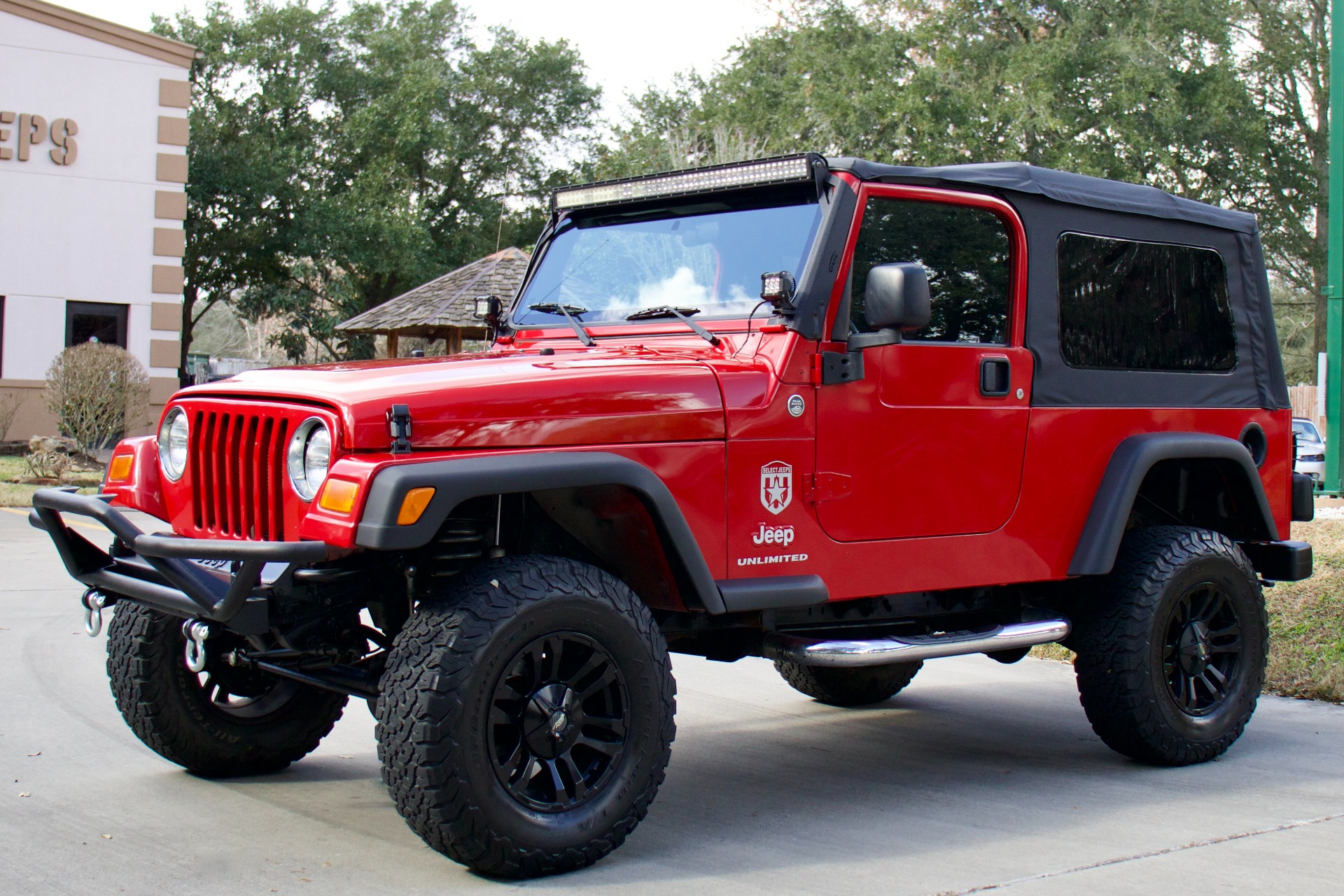
- Manual: A 5-speed manual was standard, with a 6-speed manual introduced in 2005.
- Automatic: A 3-speed automatic was available for early models, later replaced by a 4-speed automatic, offering a more refined driving experience.
- Suspension: The TJ famously introduced a coil-spring suspension system (four links and a track bar front and rear), replacing the leaf springs of the YJ. This significantly improved on-road ride comfort and articulation off-road.
- Trim Levels:
- SE: Base model, typically with the 2.5L engine.
- Sport: Mid-range, usually with the 4.0L, offering more features.
- Sahara: Top-tier luxury model, with unique fender flares, wheels, and interior upgrades.
- X: Introduced in 2002, a more affordable 4.0L option.
- Rubicon (2003-2006): The ultimate factory off-roader. It came standard with front and rear Dana 44 axles, selectable locking differentials (air-actuated), a 4:1 low-range Rock-Trac transfer case, and larger tires. A Rubicon 1997 to 2006 Jeep Wrangler for sale commands a significant premium.
- TJ Unlimited (LJ) (2004-2006): A rarer and highly desirable variant, the LJ features a 10-inch longer wheelbase than the standard TJ, providing more rear passenger legroom and significantly increased cargo space. It often came with a Dana 44 rear axle. If you find an LJ 1997 to 2006 Jeep Wrangler for sale, expect to pay a premium.
What to Look For: A Buyer’s Guide to the Used TJ
When searching for a 1997 to 2006 Jeep Wrangler for sale, diligent inspection is paramount. These vehicles are often used hard, and age takes its toll.
- Rust Inspection (CRITICAL!): This is the number one killer of TJs.
- Frame: Inspect the frame thoroughly, especially where the control arms mount, around the skid plates, and near the rear wheels. Look for flaking, bubbling, or perforations. Frame rot can be catastrophic.
- Body: Check the floorboards (lift the carpet!), rocker panels, fenders (especially inside the wheel wells), cowl, and tailgate.
- Steering Box Area: Rust can compromise the frame where the steering box attaches.
- Engine Health:
- 4.0L I6: Listen for knocking, ticking (especially valvetrain noise), or misfires. Check for common oil leaks: rear main seal (very common, not always critical but messy), valve cover gasket, and oil filter adapter. Check the coolant for signs of oil or rust.
- 2.5L I4: Similar checks for leaks and unusual noises.
- Transmission & Transfer Case:
- Manual: Test all gears, listen for grinding. Ensure the clutch engages smoothly.
- Automatic: Check fluid condition (should be red, not burnt). Test all gears, ensuring smooth shifts without slipping.
- Transfer Case: Engage 4-high and 4-low. Drive a short distance (on a loose surface if possible) to ensure engagement and no grinding noises. Check for leaks.
- Suspension & Steering:
- "Death Wobble": This is a violent, uncontrolled shaking of the front end, typically occurring at highway speeds after hitting a bump. It’s usually caused by worn steering components (tie rod ends, drag link, track bar) or ball joints. Test drive carefully for this.
- Worn Components: Check all bushings, control arms, shocks, and springs for wear or damage.
- Electrical System: Test all lights, gauges, wipers, HVAC (heater and A/C), and power windows (if equipped).
- Modifications: Many TJs are modified. Inspect any aftermarket lifts, larger tires, winches, or bumpers. Ensure they are installed correctly and professionally. Poorly installed mods can lead to issues and hide underlying problems. Ask for receipts and details on the work done.
- Documentation: Request service records and a vehicle history report (CarFax, AutoCheck) to check for accidents, salvage titles, or flood damage.
Tips for a Successful Purchase
Finding the right 1997 to 2006 Jeep Wrangler for sale requires patience and a strategic approach.
- Set a Realistic Budget: Beyond the purchase price, factor in potential immediate repairs, maintenance, and insurance. Older vehicles, especially Jeeps, will require ongoing investment.
- Test Drive Thoroughly: Drive it on various road types – highway, city, and if possible, some light off-road or uneven terrain to test the 4×4 system and suspension. Listen for unusual noises, feel for vibrations, and assess steering response.
- Pre-Purchase Inspection (PPI): This is perhaps the most crucial step. Hire an independent mechanic, preferably one familiar with Jeeps, to perform a thorough inspection. This small investment can save you thousands in unexpected repairs.
- Consider the Seller: Buying from a private party often offers more negotiation room but comes with "as-is" risk. Dealerships might offer warranties but usually at a higher price. Ask the seller direct questions about the vehicle’s history, maintenance, and why they’re selling.
- Know Your Needs: Are you looking for a daily driver, a weekend trail rig, or a dedicated rock crawler? Your intended use will heavily influence the trim level, mileage, and condition you should prioritize.
Owning a TJ: Common Challenges and Solutions
While robust, the 1997 to 2006 Jeep Wrangler isn’t without its common quirks and maintenance points.
- Rust: As mentioned, rust is the primary concern.
- Solution: Regular undercarriage washes, especially in salted road environments. Apply rust preventative coatings. For existing rust, specialized frame repair kits and body panels are available, but extensive rust often means walking away.
- "Death Wobble":
- Solution: Diagnose the worn components (track bar, tie rod ends, ball joints, control arm bushings, steering stabilizer – though the stabilizer is usually a band-aid, not a cure) and replace them. Proper tire balancing and alignment are also crucial.
- Oil Leaks (4.0L):
- Solution: The rear main seal is a common culprit. While not always urgent, it can be a significant repair. Valve cover gaskets and oil filter adapter O-rings are simpler fixes.
- HVAC Blend Door: The plastic blend door actuator can break, preventing proper temperature control.
- Solution: Aftermarket metal replacements are available, though accessing it can be a dash-out job.
- Soft Top Wear: Sun exposure and age can degrade the soft top fabric and windows.
- Solution: Replacements are widely available from Mopar and aftermarket companies.
The good news is that the TJ has an enormous and active online community, making troubleshooting and finding DIY guides incredibly easy. Parts are also readily available, both new and used.
Price Table: 1997 To 2006 Jeep Wrangler For Sale (Estimated Values)
The price of a 1997 to 2006 Jeep Wrangler for sale can vary wildly based on condition, mileage, trim level, modifications, and regional demand. This table provides a general estimate.
| Year Range | Trim Level | Engine | Transmission | Estimated Price Range (USD) | Notes |
|---|---|---|---|---|---|
| 1997-2002 | SE, Sport, Sahara | 2.5L I4 | Manual/Auto | $5,000 – $12,000 | Entry-level models, typically higher mileage. Good for budget-conscious buyers or those planning an engine swap. Condition is paramount. |
| 1997-2006 | Sport, Sahara, X | 4.0L I6 | Manual/Auto | $8,000 – $18,000 | The most common and sought-after configuration. Prices highly dependent on condition (especially rust-free frame), mileage, and maintenance history. Well-maintained examples command higher prices. |
| 2003-2006 | Rubicon | 4.0L I6 | Manual/Auto | $15,000 – $30,000+ | Premium price for factory lockers and Dana 44s. Expect higher values for stock, low-mileage, and rust-free examples. Heavily modified Rubicons can also fetch high prices if modifications are quality. |
| 2004-2006 | Unlimited (LJ) | 4.0L I6 | Manual/Auto | $18,000 – $35,000+ | The rarest and most desirable. The extended wheelbase and increased cargo space make it highly versatile. Pristine, low-mileage, or Rubicon LJs can exceed these ranges. |
Disclaimer: These prices are estimates and fluctuate based on market conditions, location, specific vehicle history, and the degree of modifications (which can either add or detract value). Always prioritize a thorough inspection over a low price. A "cheap" TJ often hides expensive problems.
Frequently Asked Questions (FAQ)
Q1: Is the 1997-2006 Jeep Wrangler a good daily driver?
A1: It can be, but temper your expectations. Compared to modern SUVs, the TJ has a rougher ride, more road noise, and less creature comfort. Fuel economy isn’t great. However, for many, its unique charm and open-air experience outweigh these compromises.
Q2: What’s the best engine for a TJ?
A2: The 4.0L inline-six is overwhelmingly recommended for its power, torque, and legendary reliability. It’s much better suited for highway driving and off-roading.
Q3: What is "death wobble" and how do I fix it?
A3: Death wobble is a violent, uncontrolled oscillation of the front end. It’s usually caused by worn steering or suspension components like the track bar, ball joints, or tie rod ends. The solution involves identifying and replacing the worn parts, along with proper alignment and tire balancing.
Q4: Are parts for the TJ hard to find?
A4: Absolutely not. The TJ is one of the most supported aftermarket vehicles. Parts are readily available from dealerships, online retailers, and salvage yards.
Q5: Can I really remove the doors and top?
A5: Yes! This is a signature feature of the Wrangler. The soft top folds down, and the hard top can be removed. The doors are also designed to be easily taken off for the ultimate open-air experience (check local laws regarding driving without doors).
Q6: Is the TJ good for off-roading?
A6: The TJ is legendary for its off-road capability. Its compact size, solid axles, and strong 4×4 system make it incredibly capable on trails. The Rubicon model (2003-2006) offers even more extreme capabilities from the factory.
Q7: What’s the difference between a TJ and an LJ?
A7: The LJ (Unlimited) is an extended-wheelbase version of the TJ, produced from 2004-2006. It’s 10 inches longer, offering more rear passenger legroom and cargo space, making it more practical for some.
Q8: What’s the most important thing to check for when buying a used TJ?
A8: Rust. Thoroughly inspect the frame (especially around control arm mounts), floorboards, and rocker panels. Extensive rust can render the vehicle unsafe or economically unfeasible to repair.
Conclusion
The allure of a 1997 to 2006 Jeep Wrangler for sale is undeniable. It represents a golden era for the iconic off-roader, blending classic Jeep ruggedness with a significantly improved ride and modern amenities. While buying a used TJ requires a keen eye and diligent inspection, the rewards are immense. You’ll gain a highly capable off-road machine, a customizable platform for endless modifications, and a vehicle that offers an unparalleled sense of freedom and adventure. By following the advice in this guide, you can confidently navigate the market and find the perfect TJ to embark on your next great journey.

